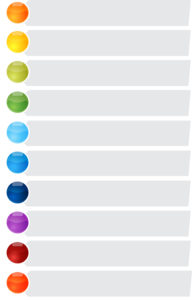Is Your Blog Post Title Worth a “Watch”?

Since we’ve been focusing on effective titles in my last couple of Say It For You posts, I couldn’t help but notice a certain article in my August issue of Financial Planning. The title reads “A Sector to Watch” and the article by Craig Israelsen is about including commodities in a portfolio to provide diversification as inflation ticks up. I really liked the “soft-sell” quality of that title. The author wasn’t “hawking” commodity funds, or even recommending them. Instead, it felt as if he was simply alerting his financial advisor readers to something that might be worth their attention.
Ryan Scott of HubSpot would describe that Financial Planning title as an “If I Were You” headline. “When someone tells us how we should do something, we balk,” Scott explains. But when someone offers to show us why we should do something, it appeals to us,” he adds.
The Israelsen article does, in fact, include facts on the performance of commodities in different markets, and does make an argument for handling inflation using that type of investment. It’s the title, though, that caught my blog content writer’s attention, because it pulls back a couple of steps from making any argument, offering the almost casual suggestion that commodities are worth a “watch”.
“The job of a headline is to get people sucked into your ad/article in the first place,” is the advice Kopywriting Kourse offers. “The most important rule of titles is to respect the reader experience. If you set high expectations in your title that you can’t fulfill in the content, you’ll lose readers’ trust,” Corey Wainwriight writes in HubSpot.
That’s precisely what’s so refreshing about the Israelsen title – it takes a contrarian position, literally ignoring both these pieces of advice. (Reminds me of the Tom Sawyer story, where, rather than persuading his friends to help him whitewash the fence, Tom makes it look like the task is so much fun that they want to participate…).
“Captivating titles are the ones that stand apart from the rest. Great titles aren’t afraid to be a little weird,” observes Ryan VanDenabeele in Impulse Creative. Craig Israelsen’s A Sector to Watch” certainly caught my attention. Is your blog post title worth a “watch”?




 It seems content writers either love or absolutely abhor those little dots.
It seems content writers either love or absolutely abhor those little dots.
Follow us online!